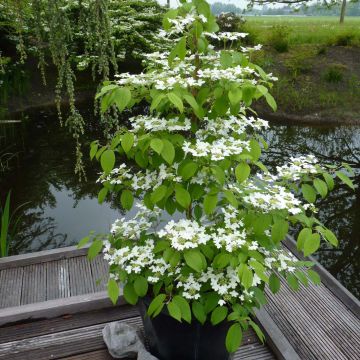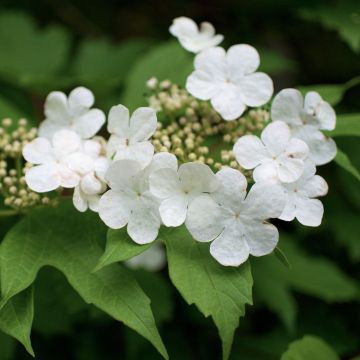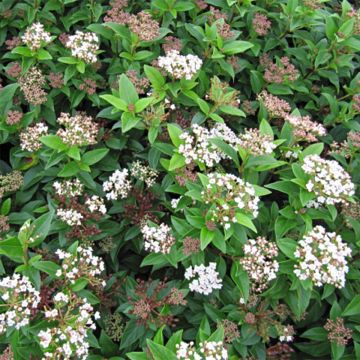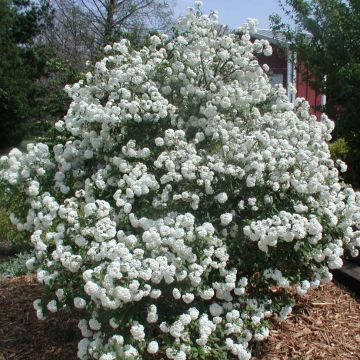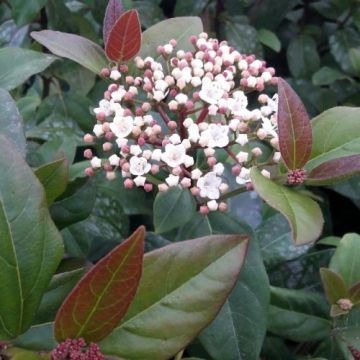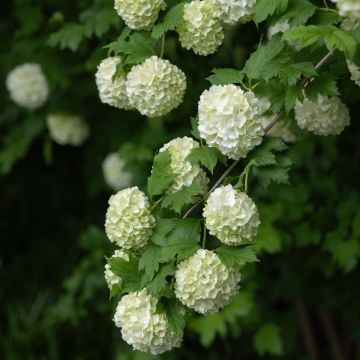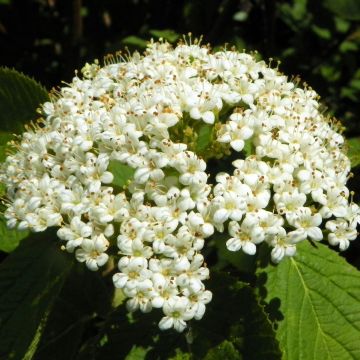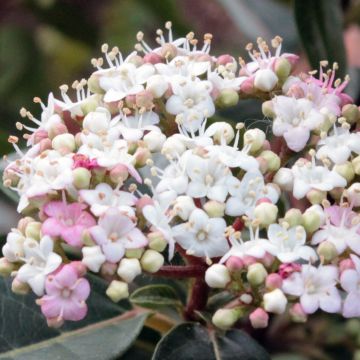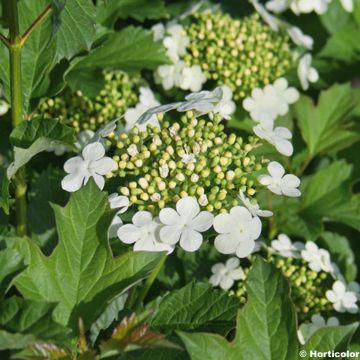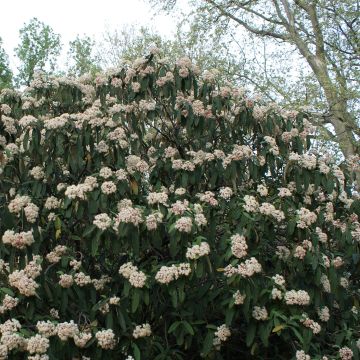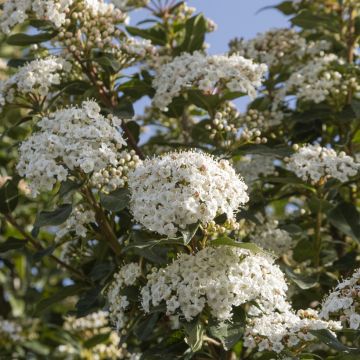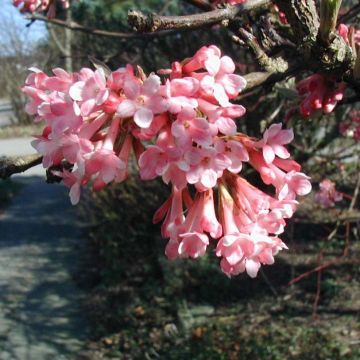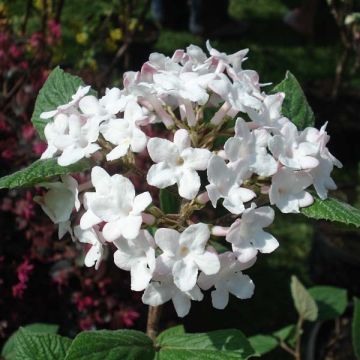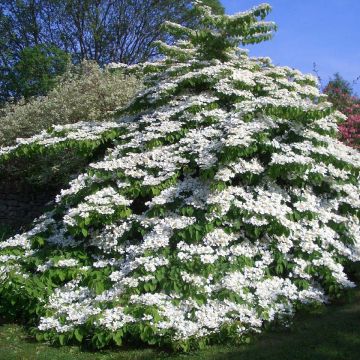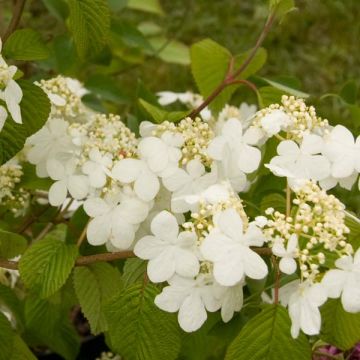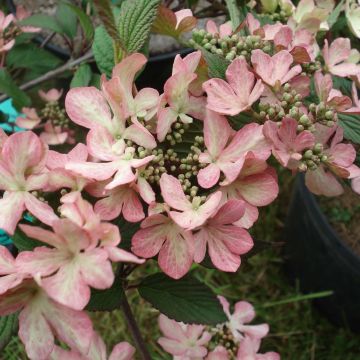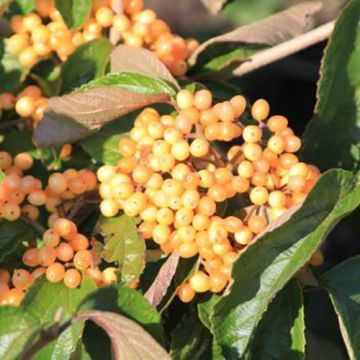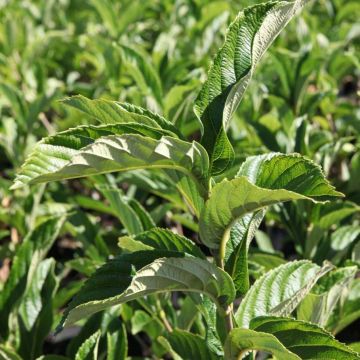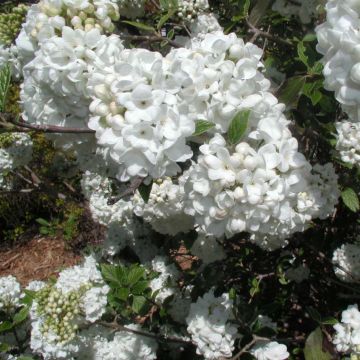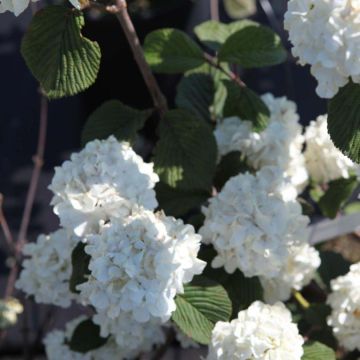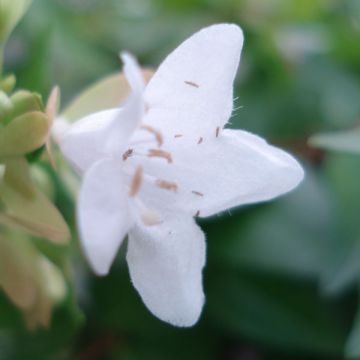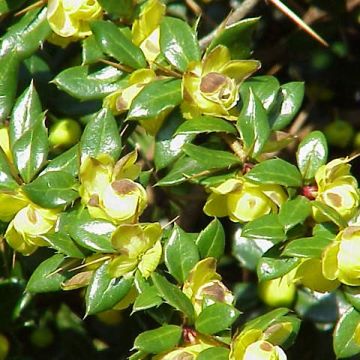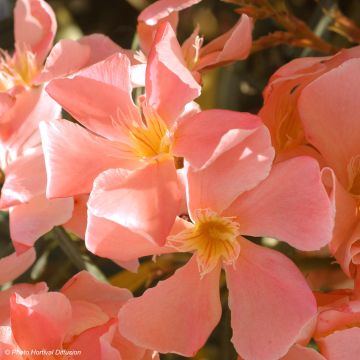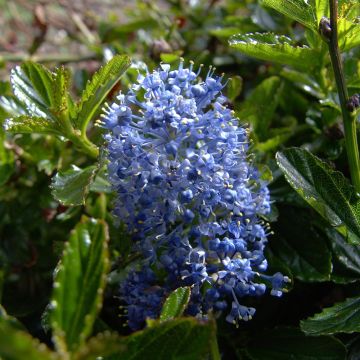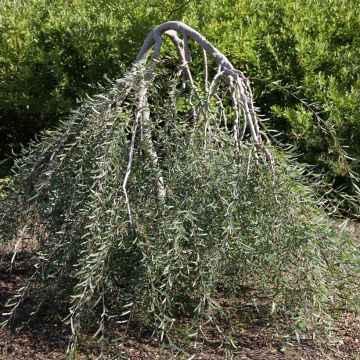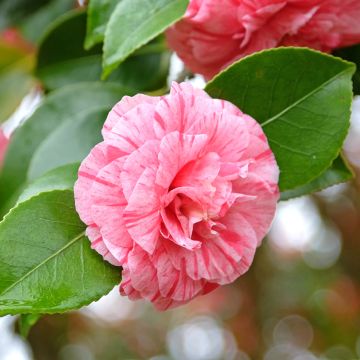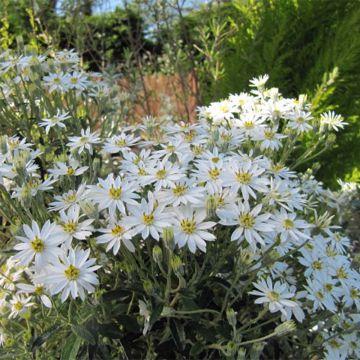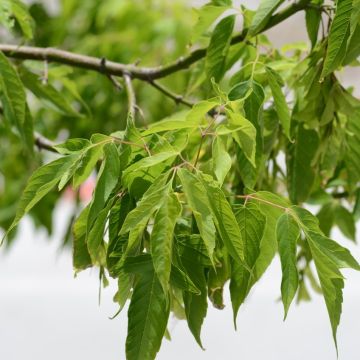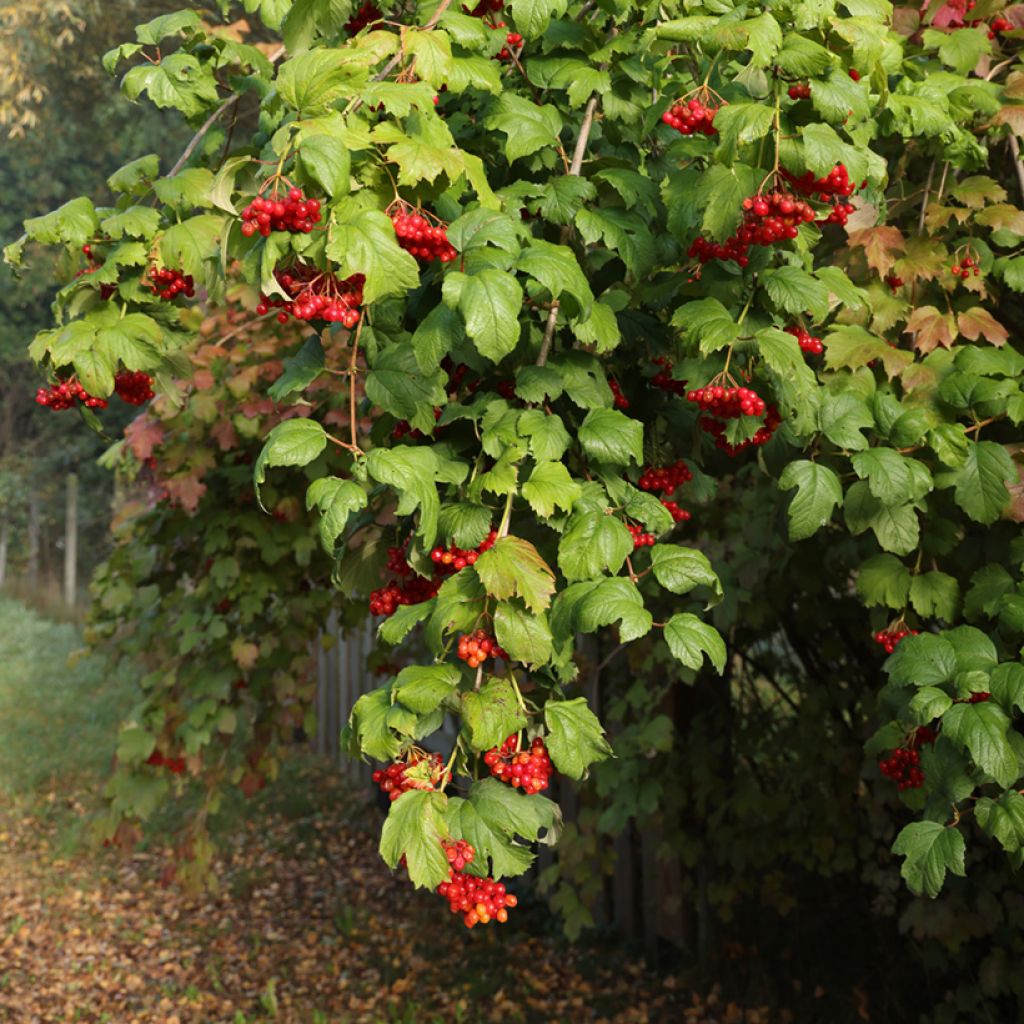

Viburnum opulus Tajożnyje Rubiny - Guelder rose
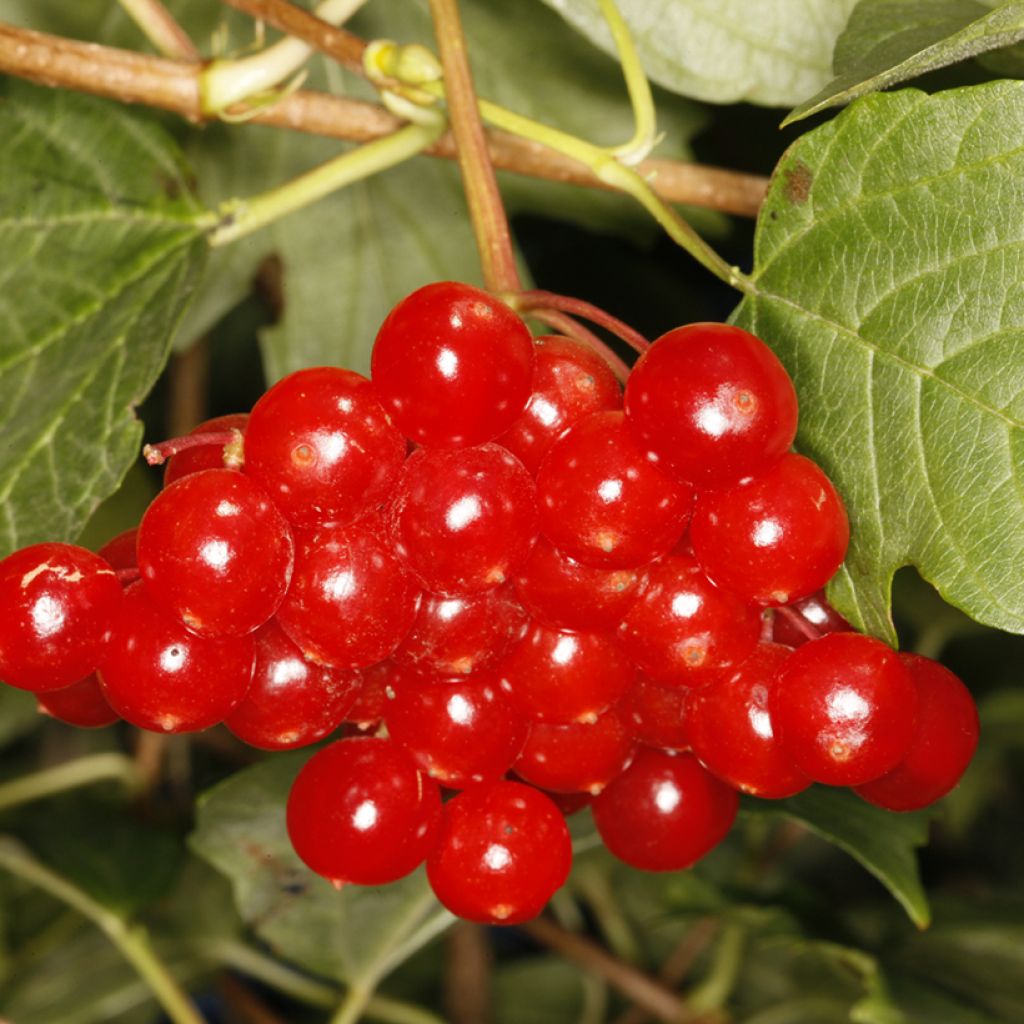

Viburnum opulus Tajożnyje Rubiny - Guelder rose
Viburnum opulus Tajożnyje Rubiny - Guelder rose
Viburnum opulus Tajożnyje Rubiny
Guelder rose, European cranberry bush
Why not try an alternative variety in stock?
View all →This plant carries a 24 months recovery warranty
More information
We guarantee the quality of our plants for a full growing cycle, and will replace at our expense any plant that fails to recover under normal climatic and planting conditions.
Oversize package: home delivery by special carrier from €6.90 per order..
Express home delivery from €8.90.
Does this plant fit my garden?
Set up your Plantfit profile →
Description
Viburnum opulus 'Tajożnyje Rubiny' is a variety of Guelder Rose cultivated for its fruits. It is a vigorous deciduous bush that thrives in damp undergrowth and is perfectly cold-resistant. It has beautiful palmate leaves and in spring it produces flat clusters of white flowers followed by clusters of small red fruits. A countryside bush, providing food and colour, that adapts to any fertile garden soil that does not dry out in summer.
Viburnum opulus 'Tajożnyje Rubiny' belongs to the Viburnaceae family. This variety is native to Siberia, specifically from the city of Barnaul where it was selected in 1973 at the Scientific and Research Institute of Horticulture of Siberia named after M.A. Lisavienko. This cultivar reaches an average height of 2.25 m, with a slightly smaller spread. The bush has an irregular crown and light grey stems. Its leaves, measuring up to 12 cm long, are broadly ovate, with five toothed lobes and pointed tips. They are a shiny dark green and turn yellow in autumn before falling off.
The flowers of Viburnum opulus 'Tajożnyje Rubiny' are arranged in flat umbels of approximately 10 cm in diameter. The outer flowers of the umbels measure up to 1.5 cm in diameter and have large white petals, while the inner flowers are small, cream-coloured, with visible stamens and pistils. Flowering begins in the second half of May, sometimes earlier depending on the climate. The round fruits, which turn reddish-purple when ripe, measure approximately 8 mm in diameter and are grouped in large pendulous clusters. Edible after freezing or cooking, these fruits are tasty with a slight bitter aftertaste. They have a high vitamin C content, ranging from 45 to 60 mg per 100 g of frozen fruit.
The wild Guelder Rose, also known as European Cranberrybush, Snowball Tree, or Guelder Tree depending on the region, is a deciduous shrub native to Europe and North Africa. It now belongs to the Adoxaceae family. This very bushy shrub, with fairly rapid growth, reaches about 3.50 m in height with a spread of 3 m, depending on the growing conditions. Its low branches easily layer on contact with the ground, accentuating its thicket-like appearance.
Viburnum opulus 'Tajożnyje Rubiny' thrives in sunny or semi-shaded positions, in any moist soil, even limestone and clay. It can be used as an informal hedge or in a mass planting. In a hedge, it can be combined with numerous ornamental fruit shrubs or edible shrubs, such as aronias, callicarpas, snowberries, Oleaster, Amelanchier alnifolia 'Martin', wild roses, etc. To add flowers to your hedge, plant some Mock Orange (Philadelphus coronarius) and weigelas, for example.
Report an error about the product description
Plant habit
Flowering
Foliage
Botanical data
Viburnum
opulus
Tajożnyje Rubiny
Viburnaceae
Guelder rose, European cranberry bush
Cultivar or hybrid
Other Viburnum
Planting and care
Viburnum opulus 'Tajożnyje Rubiny' can be grown in full sun or partial shade. Plant it from November to May, outside the freezing period, in a preferably rich, moist to wet soil, but not dry. This easy-to-grow bush requires little maintenance. The guelder rose is often attacked by aphids, but it is not a major threat. After harvesting the fruits, you can prune the bush if you want to maintain its rounded habit. Trim lightly and remove branches that compromise the plant's symmetry. This Viburnum tolerates severe pruning.
Planting period
Intended location
Care
This item has not been reviewed yet - be the first to leave a review about it.
Hedge shrubs
Haven't found what you were looking for?
Hardiness is the lowest winter temperature a plant can endure without suffering serious damage or even dying. However, hardiness is affected by location (a sheltered area, such as a patio), protection (winter cover) and soil type (hardiness is improved by well-drained soil).

Photo Sharing Terms & Conditions
In order to encourage gardeners to interact and share their experiences, Promesse de fleurs offers various media enabling content to be uploaded onto its Site - in particular via the ‘Photo sharing’ module.
The User agrees to refrain from:
- Posting any content that is illegal, prejudicial, insulting, racist, inciteful to hatred, revisionist, contrary to public decency, that infringes on privacy or on the privacy rights of third parties, in particular the publicity rights of persons and goods, intellectual property rights, or the right to privacy.
- Submitting content on behalf of a third party;
- Impersonate the identity of a third party and/or publish any personal information about a third party;
In general, the User undertakes to refrain from any unethical behaviour.
All Content (in particular text, comments, files, images, photos, videos, creative works, etc.), which may be subject to property or intellectual property rights, image or other private rights, shall remain the property of the User, subject to the limited rights granted by the terms of the licence granted by Promesse de fleurs as stated below. Users are at liberty to publish or not to publish such Content on the Site, notably via the ‘Photo Sharing’ facility, and accept that this Content shall be made public and freely accessible, notably on the Internet.
Users further acknowledge, undertake to have ,and guarantee that they hold all necessary rights and permissions to publish such material on the Site, in particular with regard to the legislation in force pertaining to any privacy, property, intellectual property, image, or contractual rights, or rights of any other nature. By publishing such Content on the Site, Users acknowledge accepting full liability as publishers of the Content within the meaning of the law, and grant Promesse de fleurs, free of charge, an inclusive, worldwide licence for the said Content for the entire duration of its publication, including all reproduction, representation, up/downloading, displaying, performing, transmission, and storage rights.
Users also grant permission for their name to be linked to the Content and accept that this link may not always be made available.
By engaging in posting material, Users consent to their Content becoming automatically accessible on the Internet, in particular on other sites and/or blogs and/or web pages of the Promesse de fleurs site, including in particular social pages and the Promesse de fleurs catalogue.
Users may secure the removal of entrusted content free of charge by issuing a simple request via our contact form.
The flowering period indicated on our website applies to countries and regions located in USDA zone 8 (France, the United Kingdom, Ireland, the Netherlands, etc.)
It will vary according to where you live:
- In zones 9 to 10 (Italy, Spain, Greece, etc.), flowering will occur about 2 to 4 weeks earlier.
- In zones 6 to 7 (Germany, Poland, Slovenia, and lower mountainous regions), flowering will be delayed by 2 to 3 weeks.
- In zone 5 (Central Europe, Scandinavia), blooming will be delayed by 3 to 5 weeks.
In temperate climates, pruning of spring-flowering shrubs (forsythia, spireas, etc.) should be done just after flowering.
Pruning of summer-flowering shrubs (Indian Lilac, Perovskia, etc.) can be done in winter or spring.
In cold regions as well as with frost-sensitive plants, avoid pruning too early when severe frosts may still occur.
The planting period indicated on our website applies to countries and regions located in USDA zone 8 (France, United Kingdom, Ireland, Netherlands).
It will vary according to where you live:
- In Mediterranean zones (Marseille, Madrid, Milan, etc.), autumn and winter are the best planting periods.
- In continental zones (Strasbourg, Munich, Vienna, etc.), delay planting by 2 to 3 weeks in spring and bring it forward by 2 to 4 weeks in autumn.
- In mountainous regions (the Alps, Pyrenees, Carpathians, etc.), it is best to plant in late spring (May-June) or late summer (August-September).
The harvesting period indicated on our website applies to countries and regions in USDA zone 8 (France, England, Ireland, the Netherlands).
In colder areas (Scandinavia, Poland, Austria...) fruit and vegetable harvests are likely to be delayed by 3-4 weeks.
In warmer areas (Italy, Spain, Greece, etc.), harvesting will probably take place earlier, depending on weather conditions.
The sowing periods indicated on our website apply to countries and regions within USDA Zone 8 (France, UK, Ireland, Netherlands).
In colder areas (Scandinavia, Poland, Austria...), delay any outdoor sowing by 3-4 weeks, or sow under glass.
In warmer climes (Italy, Spain, Greece, etc.), bring outdoor sowing forward by a few weeks.


































